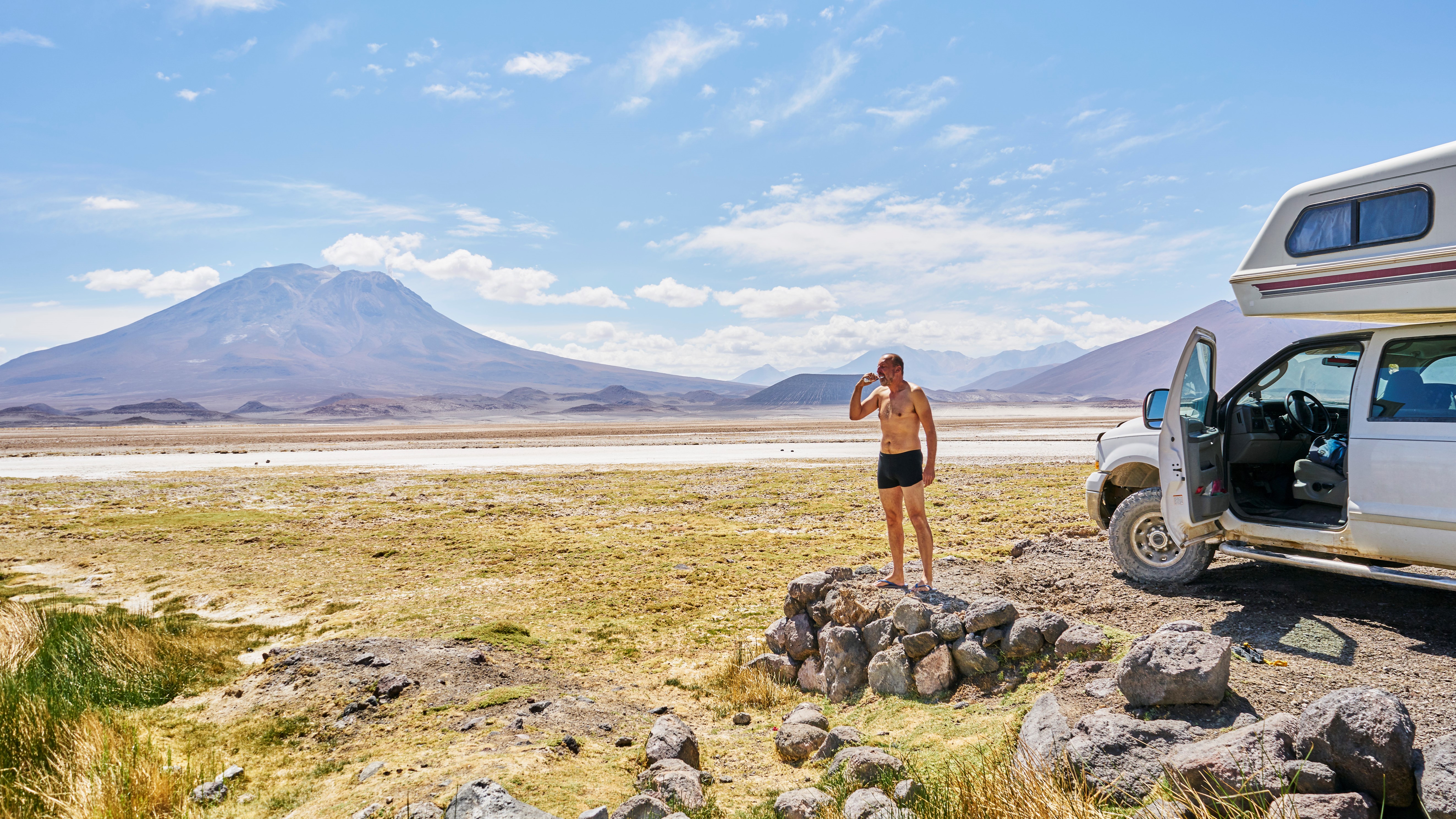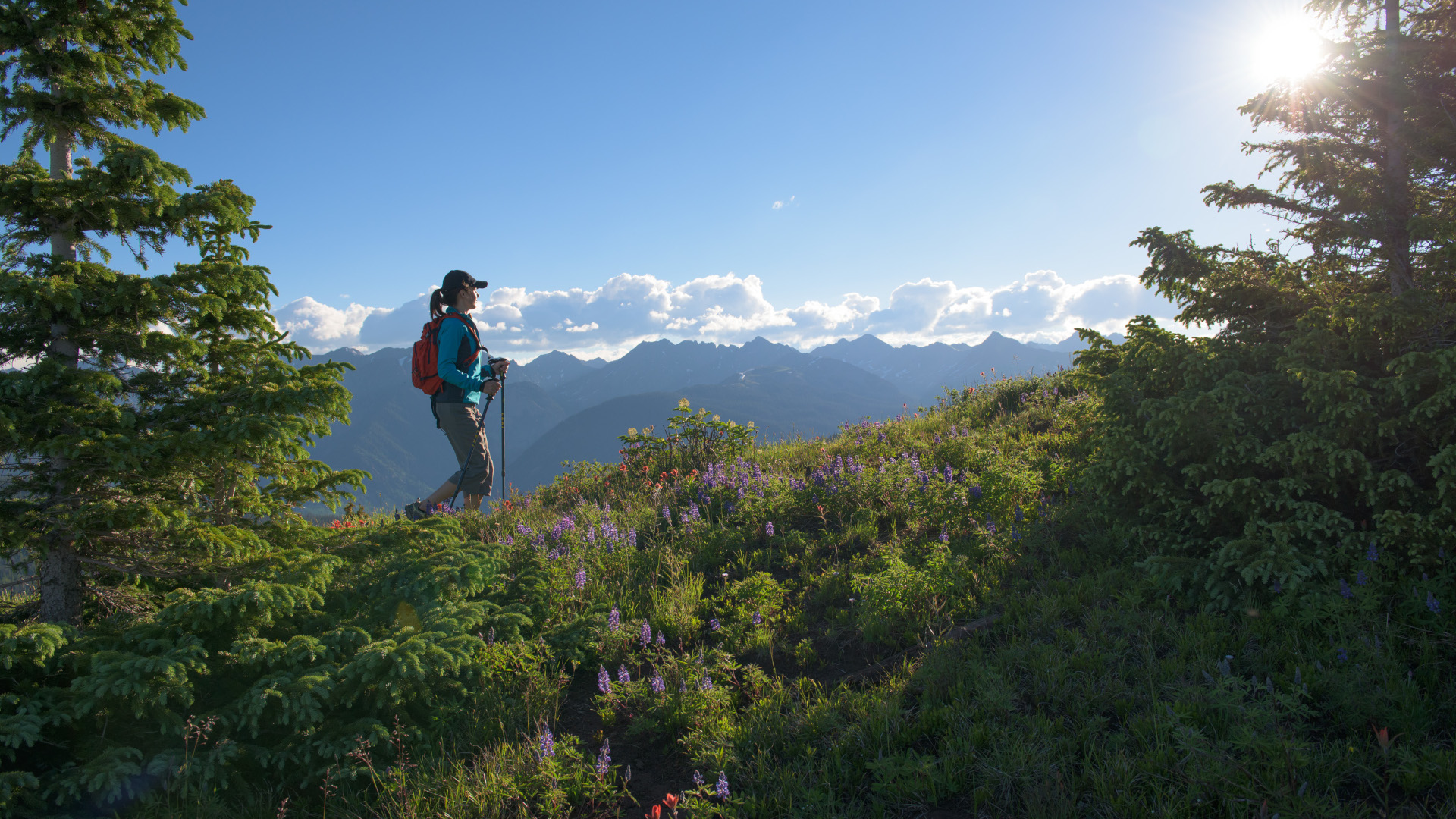What kind of underwear do you wear hiking?
A quick brief on how to choose the most comfortable underwear option for long hikes

What kind of underwear do you wear hiking? It’s a question you might easily be asking if you’re planning on your first longer hike. Whether you’re planning a full-day ramble or a multi-day trek, the last thing you want is to be constantly tugging your underwear out of your crack or subject to uncomfortable chafing or the wafting of an unpleasant odor when you sit down for lunch.
This area is something I definitely got wrong in my early days of backpacking. Despite spending hours considering which hiking pants and base layer I was going to wear for optimum comfort and making sure my backpack wasn’t too heavy, it never occurred to me that my standard cotton thongs with lacy edges wouldn't suffice. After all, I wear them all day at home. But after a couple of days trekking in the Rockies, I can tell you that I was definitely finding the tag and seams irritating and realized I was going to need a better solution for my next jaunt. Here, I brief you on what to look for when choosing a pair of hiking underwear.

What kind of underwear do you wear hiking?
Perhaps needless to say, choosing underwear is one of the most individual choices you can make. You can definitely go commando, which I’m a big fan of for running but not so much when I’m wearing more rugged hiking pants like my Fjallraven Keb Curved Trousers. Or in summer you might be able to hike in running shorts with built in mesh underwear. If you’re going traditional, some like it skimpy and others are happy hiking with what’s essentially a full pair of shorts under their trousers. When I started looking into the matter, I found that underwear was most commonly designed for runners or general sport rather than hiking specifically, but that seemed like a good place to start.
Within that broad category, you can find all styles of underwear: thong, bikini, brief, boy short, boxers and boxer briefs. Which style you choose is totally down to personal preference. I hate the feeling of larger styles with more coverage that are always threatening to give me a wedgie, so I stick with thongs, but basically you probably want to go with the style most similar to that which you wear in everyday life.

What’s the best fabric for hiking underwear?
Let’s be honest, your nether regions can get a bit clammy at the best of times, so when you’re sweating it out on the trail, you really want your undies to be made using a breathable, moisture-wicking fabric that doesn’t trap all that humidity and leave you exposed to itching or a dreaded yeast infection. Avoid cotton underwear at all costs since this just gets damp and clammy. Pick one of these three alternatives instead:
- Merino wool: It may sound weird for underwear, but merino wool can be a great choice. Underwear like the Icebreaker Women’s Siren wicks away sweat, dries reasonably quickly, keeps you warm if you get sweaty in cold conditions and most importantly, doesn’t get smelly. For that final reason, this is my go-to choice for longer backpacking trips. The only real downsides to this option are that it’s not as durable as synthetic fabric and it’s pricier (but you really only need one pair since it doesn’t get smelly).
- Synthetic: Synthetic underwear shares a lot of the same properties as wool in terms of wicking moisture, though it’s faster drying and holds up to more hard wear. It’s also more affordable than wool. Nylon can trap a bit of heat or moisture, but as long as they’re not too tight and have a cotton gusset, these don’t really increase your likelihood of itching or infections. I’ve been really happy wearing my InvisiWear thongs from Lululemon on day hikes and overnights, though I will warn you that synthetic underwear does get smelly on longer treks, but with it’s quick-drying technology it can get rinsed out in the river and hung up in my tent overnight and be ready for morning.
- Bamboo: A third option that’s super kind against your skin is bamboo viscose, and BAM Bamboo have a whole line of active underwear, some of which we’ve rated in our list of the best running underwear. Bamboo viscose is ultra soft, breathable and moisture-wicking, however it’s slow to dry which could be unpleasant if you're hiking in humid conditions (think: the east coast in summer) and it’s not the most durable of fabrics. Its odor-protection isn’t quite as good as that of wool, but one pair of briefs could definitely last you for a couple of days on the trail.

What to look for in hiking underwear
Beyond the matter of style, when you’re looking for hiking underwear, there are four other factors that you’ll want to look for in your skivvies.
- Flatlock seams: Flatlock seams are constructed using a stitching method that avoids overlapping edges and does away with bulky briefs and annoying chafing. As few seams as possible is best.
- Fit: You can choose the best fabric and the right seams and still get the fit of your underwear wrong. If yours are too tight, they may chafe or decrease breathability. They shouldn’t be falling off you, but I do tend to size up slightly so they’re not too tight.
- Tagless: Don’t make my mistake of wearing a pair that lists the washing instructions for 37 different languages in a small novel that rubs against your butt, right where your backpack rests. Choose underwear that has no tag at all, or one designed to be completely torn off.
- Waistband: Particularly for boxers, boy shorts and briefs, make sure the waistband doesn’t cut in and is made of a smooth, soft material that lies flat against your skin so you don’t even notice it’s there.

How many pairs of underwear do you need for hiking?
For a backpacking trip, bring the underwear that you’re wearing plus an extra pair. This means you can change halfway, alternate pairs daily and rinse the dirty pair each evening, or just have an emergency backup.
All the latest inspiration, tips and guides to help you plan your next Advnture!
If you’ve chosen the right fabric, style and fit, you shouldn’t need a fresh pair every day, and if the thought of wearing dirty underwear grosses you out, remember you can turn them inside out so that’s two uses out of each pair. Another way to increase their life span is to take them off at night and sleep in your thermal underwear instead.
Julia Clarke is a staff writer for Advnture.com and the author of the book Restorative Yoga for Beginners. She loves to explore mountains on foot, bike, skis and belay and then recover on the the yoga mat. Julia graduated with a degree in journalism in 2004 and spent eight years working as a radio presenter in Kansas City, Vermont, Boston and New York City before discovering the joys of the Rocky Mountains. She then detoured west to Colorado and enjoyed 11 years teaching yoga in Vail before returning to her hometown of Glasgow, Scotland in 2020 to focus on family and writing.

